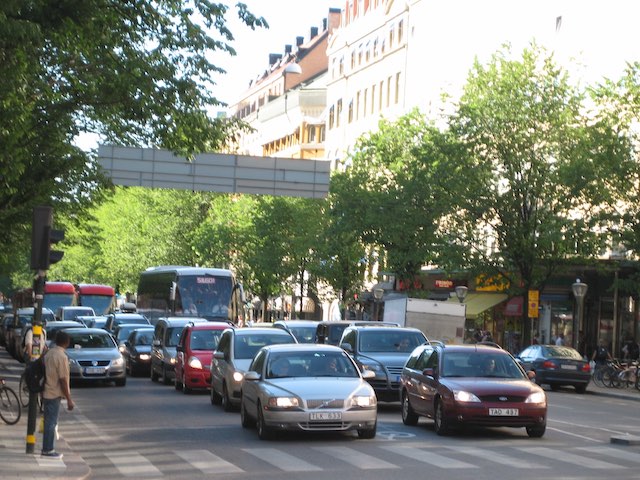Kimberly Nicholas, an associate professor of sustainability at Sweden’s Lund University, says that automobiles are killers and offers twelve ways to get them out of our cities. Typically for sustainability advocates, she completely ignores the benefits provided by automobiles as well as ways in which the costs of automobiles could be reduced without reducing driving.
A typical street in sustainable Stockholm. Photo by European Institute for Sustainable Transport.
Her twelve ways include reducing the amount of parking, charging more for parking, closing parts of cities to automobiles, and charge a fee to drive automobiles into city centers. All revenues from such fees, parking, fines, etc., should, in her opinion, go to fund “sustainable transport,” which means any kind of transportation other than automobiles.
People are already leaving cities. A recent poll found that 60 percent or more of Americans believe that higher densities are bad for the environment and increase both traffic and crime, suggesting that urban planners’ claims that densities are good haven’t persuaded most people. If cities increase the cost of travel or deny people easy access to businesses in those cities, more people are going to leave.
Why is it that sustainability advocates are so authoritarian? I am reminded of a paper I heard at a sustainable transportation conference whose authors were trying to find the most sustainable city on earth. After reviewing several cities, they concluded that the most sustainable was Halle-Neustadt, Germany, a city built exclusively of mid-rise and high-rise apartments. According to the presenter, the city had so much mass transit that most people didn’t even have cars, and the few that did were required to garage them at the edge of the city
I asked for a copy of the paper and it revealed that Halle-Neustadt had been the most sustainable city only before unification of East and West Germany. As I discovered for myself when I visited the city in 2005, after unification many if not most residents bought cars and parked them on the green spaces between apartment buildings. Many other residents moved out into suburbs of single-family homes because they didn’t like living in tiny apartments, and a big issue was that the government wasn’t able to demolish empty buildings as fast as they were emptying out.
Perhaps not coincidentally, this paper was also written by Lund University scholars Lena Eskisson and Karin Book (who was then a grad student at Lund). Their conclusions make clear that sustainability requires an authoritarian government that not only controls how people live and travel but one that keeps people poor so they won’t be able to do much travel.









People flee traffic is oxymoron ….
People flee traffic they are constituent of to create more traffic elsewhere.
?(????)
I for one have no real qualms if cities wanna try attempts to mitigate air pollution and noise concerns. People bear the brunt of issues concerning. You open the garage door before turning car on. Now add 100000 cars in just ten square miles.
And there very little difference in air quality levels
Between suburbs and cities.
https://pbs.twimg.com/media/EmXfXtBU0AElY2u.jpg
https://www.centreforcities.org/wp-content/uploads/2020/01/Figure-8-Share-PM2.5-Suburbs-City-Centre.png
Nothing like invoking a communist built city like Halle-Neustadt to tip ones hand on what they really want.